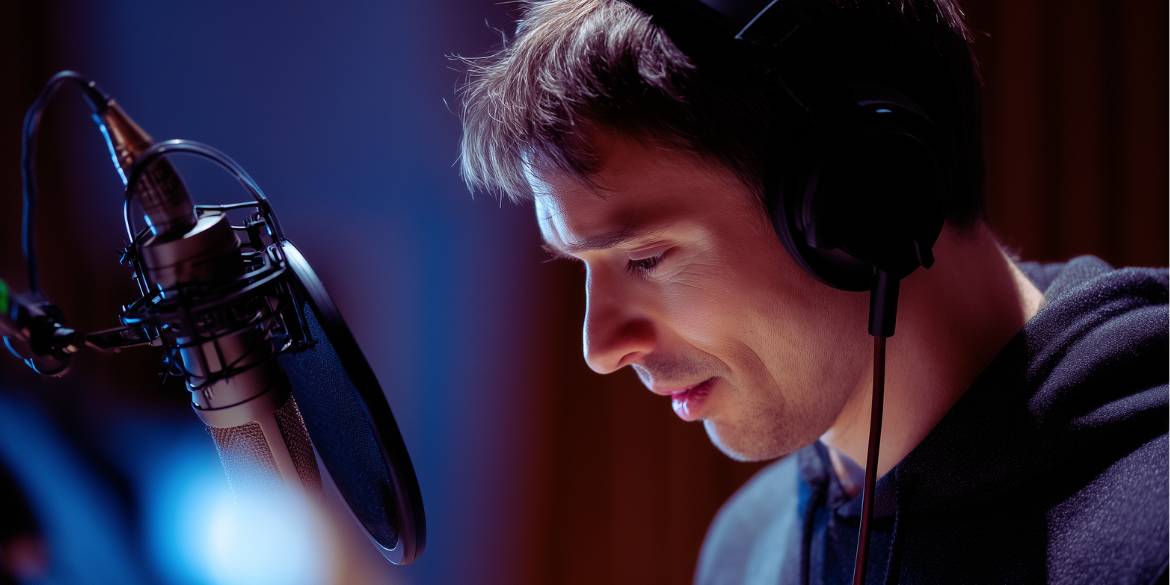Dubbing styles explained: lip-sync, voiceover & narration

You’ve got a great message. The kind that can cross borders, spark conversations and stick in people’s minds long after the meeting ends or the credits roll.
But here’s the challenge – when your audience doesn’t speak the language, how do you make sure they still feel every beat, every joke, every twist?
From the cinematic polish of lip-sync to the quick-fire efficiency of voiceover and the cultural familiarity of narration, each approach does a different job. So, let’s break them down, side-by-side, so you can pick the dubbing style that works for your story – and your audience.
Lip-sync dubbing: immersion that feels truly natural
Think of cinematic dubbing that makes you forget you’re watching an international hit. When done right, it’s seamless. That’s the magic of lip-sync dubbing. It’s the gold standard: precise, emotional, immersive.
Here’s how it works:
- Transcription
The original dialogue is transcribed so every word and nuance is captured accurately.
- Translation and adaptation
Professional linguists translate and adapt the script, making sure it carries the same meaning, timing and cultural impact in the target language.
- Casting and recording
Voice actors are chosen for authenticity and emotional impact, then bring the adapted script to life in the studio.
- Post-editing and adaptation
Editors fine-tune the performance, aligning delivery with on-screen action and refining any cultural or linguistic details for a seamless final result.
It’s a creative craft, but it comes at a cost. Lip-sync dubbing is time-intensive and can be expensive. It shines in feature films, dramas and high-end animation – formats where emotion and immersion are everything.
Still, AI is starting to venture in. Industry innovators offer AI-powered lip-sync dubbing, but the human touch remains essential for emotional authenticity.
When to use it:
Dramas, narrative-driven films, character-led series – anything where emotional nuance and performance matter most.
The trade-off:
Best quality, but highest time and cost. Not always the right call for high-volume or budget-sensitive projects.
Voiceover dubbing: the agile bridge between quality and scale
Sometimes, you don’t need perfect lip sync – you just need your audience to understand, engage and stay connected. That’s where voiceover dubbing comes in: flexible, efficient and often surprisingly powerful.
Styles include:
-
Phrase Sync voiceover
Translators follow the phrase/sentence timing of the original to produce a close sync to the original, respecting breaks and pauses.
- UN-style voiceover
Think documentary or speech formats – you faintly hear the original speaker, then the translated voice takes over.
-
Straight voiceover
The original audio disappears, replaced entirely by the translated narration – common in training, education, explainer videos.
Regardless of where on the human-AI scale the project lands, cultural ambassadors and creative specialists should always review and polish to ensure accuracy, tone and delivery.
Best for:
Documentaries, training modules, news, factual series, social media, corporate explainers – content where informational clarity trumps emotional immersion.
Why it works:
Greater efficiency at a lower price, with healthy engagement – especially when humans validate the AI’s output (a “human-in-the-loop” model).
The catch:
Less immersive than lip-sync. It still works when your content leans more toward facts than feelings.

Narration: regional, functional, fast
Now for something different: it’s not flashy, but it works – especially in parts of Eastern Europe. Narration involves a single narrator reading the translated script over the original audio track. No lip-sync. No immersive performance. Just the message.
How it works:
One voice, one track. No matching to on-screen performance – just plain, straightforward narration.
Where you’ll see it:
Poland, Russia – regions where this style is familiar and accepted.
Why it works there:
Cheap. Fast. Culturally accepted. Audiences know what to expect.
But globally? Voiceover is often preferred, offering wide appeal and more emotional engagement – without the price tag of lip-sync dubbing.
Dubbing the RWS way: smart, scalable and story-driven
There’s no universal winner when it comes to types of dubbing. Your content type, audience expectations, budget and timeline all play a part. The real art lies in choosing the right approach – and at RWS, we're here to help.
Want cinematic immersion? Lip-sync with AI-enhanced human oversight. Need broad reach, fast? Voiceover with a human-in-the-loop checks the emotion and accuracy. Serving a regional audience where simplicity works? Narration fits the bill.
Quick comparison table
| Dubbing Style | Strengths | Best used for | Drawbacks |
| Lip-sync dubbing | Immersive, seamless, emotional | Feature films, high-end dramas, animation | Time- and cost-intensive |
| Voiceover dubbing | Efficient, scalable, emotionally clear | News, training, explainers, factual content | Less immersive than lip-sync |
| Narration | Simple, fast, familiar in select regions | Eastern Europe, quick regional localization | Not emotionally driven or globally loved |
Bottom line
Dubbing is a tailored decision you make, not a one-size fix. Whether you want cinematic immersion, scalable clarity, or regional familiarity – there’s an approach (or hybrid approach) that fits your story, your audience and your budget.
Want to see how artificial intelligence and human craft blend to power the perfect dub? Let’s start your content’s global conversation.
